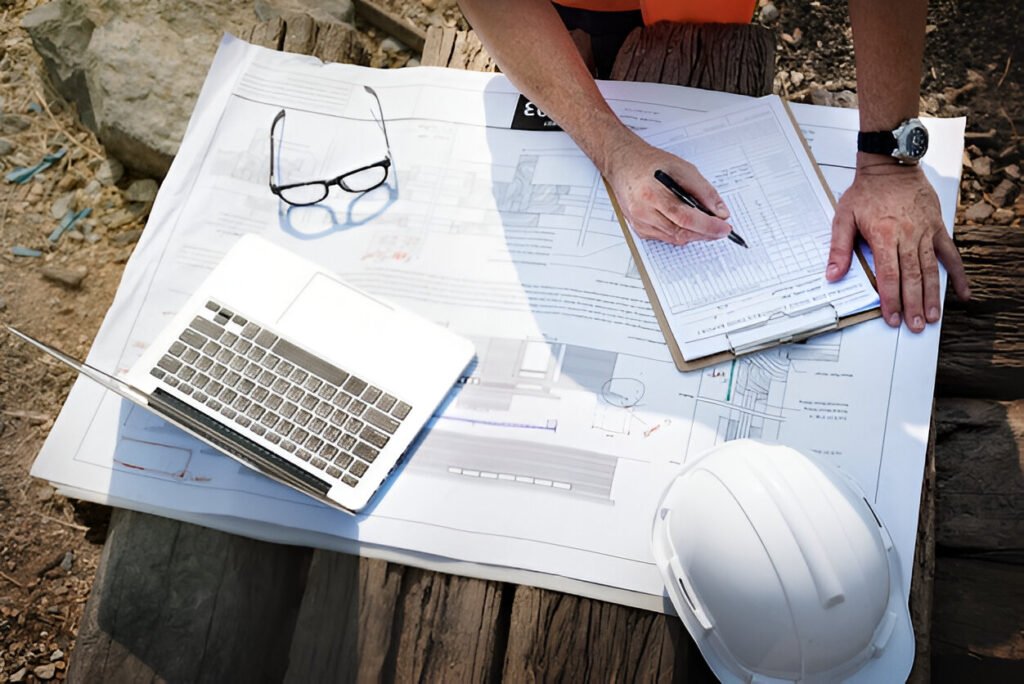
Construction Funding
Construction Funding encompasses facilities like factories, manufacturing plants, and warehouses. These projects often require substantial capital investments due to their scale and the specialized equipment involved. Funding typically comes from private corporations, institutional investors, or government grants, especially when projects align with economic development goals. For example, in Terre Haute, Indiana, federal funding from initiatives like the American Rescue Plan Act and the Inflation Reduction Act has fueled infrastructure investments, including new factories, creating jobs and revitalizing the area.

Commercial Construction
Commercial construction includes projects such as office buildings, shopping centers, and hotels. These projects are generally funded through a mix of private investments, bank loans, and sometimes public-private partnerships. The costs are higher due to factors like land acquisition, complex permits, and specialized materials. For instance, the City of Darwin, in collaboration with a local construction company, plans to build a new $150 million, 20-storey civic center. The funding is a mix of public and private investments, with the City contributing $77 million and the private company covering the remaining costs.
Residential Construction
Residential construction pertains to housing projects, including single-family homes, apartments, and condominiums. Funding is often secured through bank loans, personal savings, or government programs aimed at promoting affordable housing. These projects tend to have lower costs compared to industrial and commercial constructions, primarily due to smaller scale and less complex requirements. However, challenges such as underfunding and policy shifts can impact the quality and availability of public housing. For example, public housing in the United States has faced issues due to systematic efforts to undermine the program, leading to poor living conditions and underfunding.

Costs Covered in Construction Funding
Regardless of the sector, construction funding typically covers several core expenses:
- Land Acquisition: Purchasing the land where the project will be developed.
- Labor Costs: Wages for architects, engineers, construction workers, and other personnel involved.
- Materials: Procurement of necessary construction materials such as steel, concrete, wood, and finishing supplies.
- Permitting and Legal Fees: Costs associated with obtaining necessary permits and ensuring compliance with local regulations.
- Equipment and Machinery: Expenses for renting or purchasing equipment essential for construction activities.
The allocation of funds across these categories varies by sector. Industrial projects may allocate more towards specialized equipment, while residential projects might focus more on materials and labor.
Success Stories of Funded Projects

Cremica Mega Food Park, Himachal Pradesh, India
The Cremica Mega Food Park, located in Una district, Himachal Pradesh, is a prime example of successful industrial construction funding. With a term loan sanction of ₹40.2 crore, the project spans 52 acres and includes facilities like frozen cold stores and warehouses. The park has attracted independent units, leading to job creation and economic growth in the region. It is expected to create employment opportunities for approximately 8,500 people, particularly in the rural sector.
Fraser Coast Developments, Queensland, Australia
The Fraser Coast region is undergoing a transformative phase with several multimillion-dollar commercial projects. Notably, an 18-storey Sheraton Hotel with 340 apartments and 200 hotel rooms in Torquay has been approved, anticipated to generate 1,350 jobs. Additionally, a $25 million battery factory in Maryborough is set to create 273 jobs, showcasing successful funding and execution of commercial construction projects.
Tharangambadi Fishing Harbour, Tamil Nadu, India
In the residential sector, the construction of a fishing harbour at Tharangambadi in Mayiladuthurai district, Tamil Nadu, funded with a term loan of ₹108 crore, has significantly improved the livelihood of local fishing communities. The harbour facilitates the berthing of numerous boats and is expected to generate employment for thousands, enhancing the socio-economic status of the region.
Conclusion
Understanding the nuances of construction funding across industrial, commercial, and residential sectors is essential for successful project execution. Each sector presents unique challenges and opportunities, but with appropriate funding strategies and resource allocation, projects can achieve their goals and contribute positively to economic and community development.

